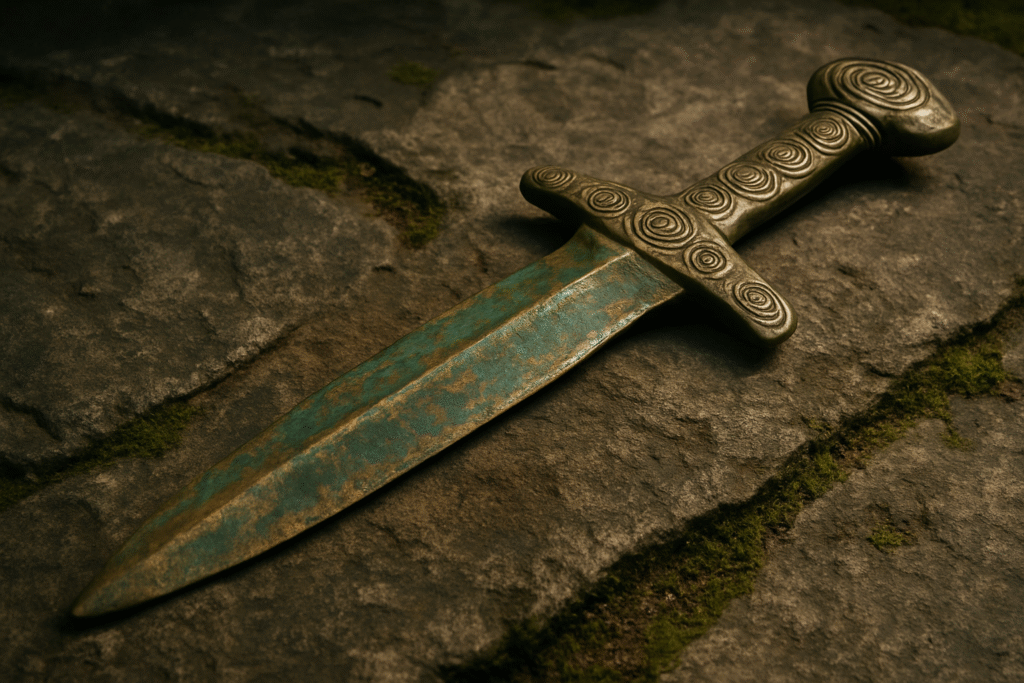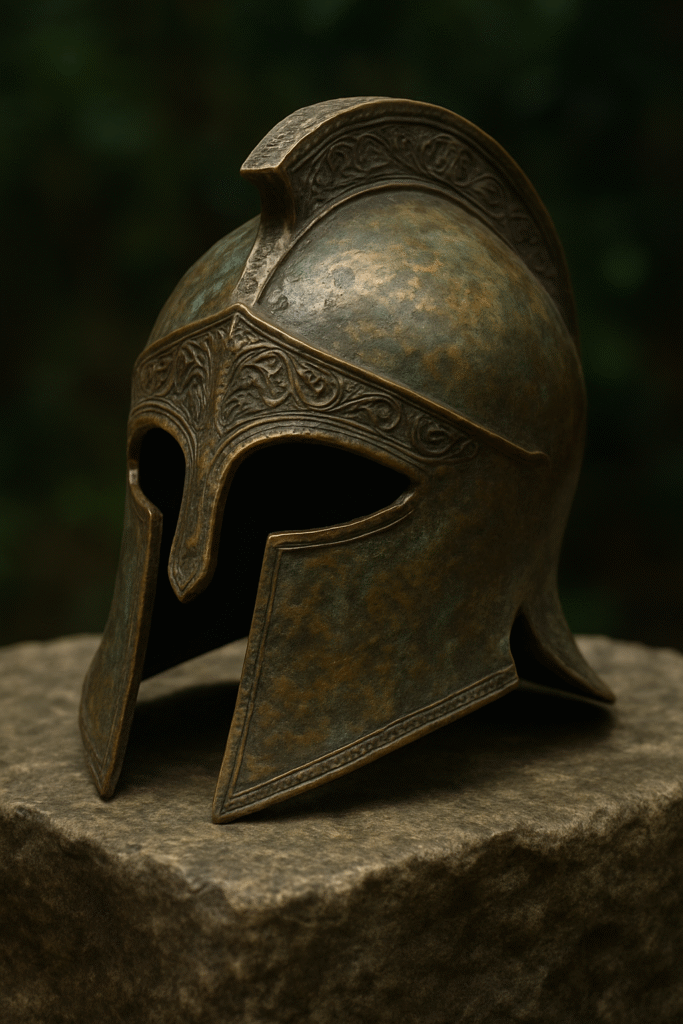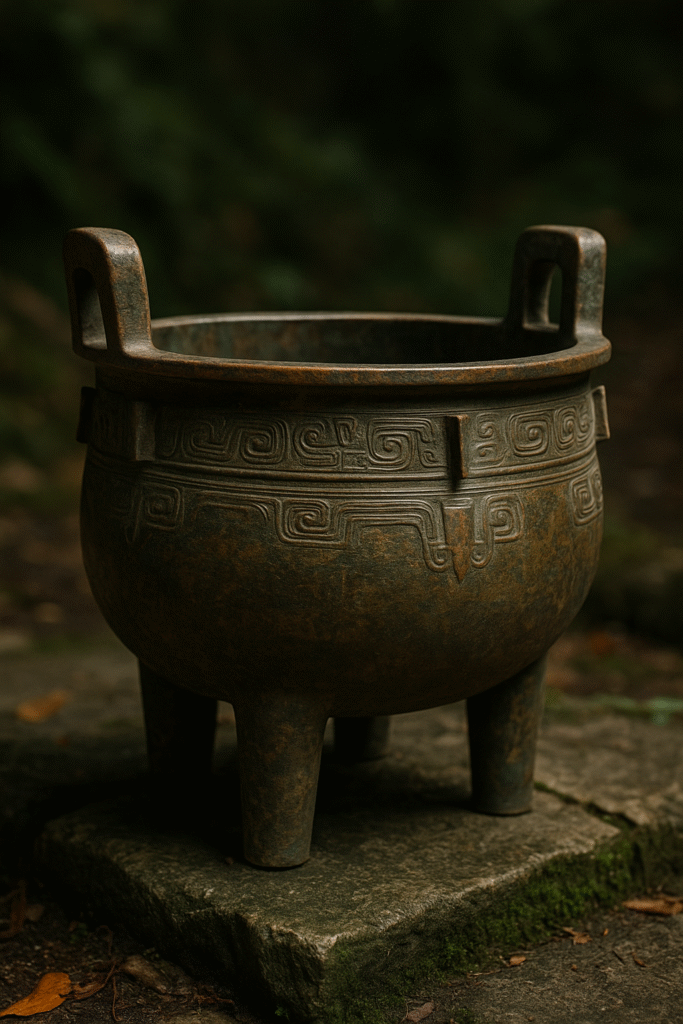In the dim fires of antiquity, humanity discovered not just a metal, but a revolution. Bronze—an alloy of copper and tin—became the heartbeat of an age, a shimmering thread woven through the rise of kingdoms, the clash of empires, and the birth of artistry itself. More than a substance, it was transformation made tangible: stronger than stone, more malleable than iron, and radiant in the sun like a gift from the gods.

The Dawn of Bronze
The Bronze Age did not begin with a single strike of a hammer, but with curiosity: the melding of two base elements into something greater. In the crucibles of Mesopotamia, Anatolia, and beyond, smelters uncovered the secret of durability, and with it, the possibility of empire. Bronze weapons gave armies dominance; bronze tools carved settlements out of wilderness; bronze ornaments adorned the powerful, shimmering symbols of wealth and authority.
From the great city-states of Sumer to the palaces of Mycenae, bronze was both weapon and wonder. Its presence marked a society as advanced, its absence signaled a people bound to the past.
Power Cast in Metal
Warriors of the Bronze Age strode into battle clad in breastplates that caught the light like liquid fire, their swords sharper and longer-lasting than any chipped stone or hammered copper blade before them. Chariots rolled on bronze fittings; shields gleamed with bronze bosses. With this new alloy, conflict was reshaped—war became not only a struggle of men but of metallurgists, those unseen alchemists whose knowledge decided empires.

Yet bronze was more than an implement of war. Sculptors used it to mold gods into form, giving temples their silent guardians and palaces their immortal effigies. A bronze statue was not mere art—it was permanence. Unlike wood, it did not rot; unlike stone, it could capture motion, muscle, and breath.
The Spiritual Alloy
Across cultures, bronze came to symbolize endurance and divinity. The Shang Dynasty in China poured bronze into vast ritual vessels—cauldrons so massive and ornate they still awe museum halls today. In Greece, bronze carried stories: heroes cast in metal to endure the centuries. Even in myth, bronze endured—Hesiod’s “race of bronze” was fierce and unyielding, born of ash trees and destined for war.
For societies who cast their future in molten ore, bronze was proof that humanity could shape nature itself, bend the earth to its will, and from it draw both destruction and beauty.
Fragility in Power
Yet even bronze was not eternal. Its brilliance dimmed with the fall of trade routes, for without tin—the rare partner in the alloy—civilizations faltered. The Late Bronze Age collapse swept across the Mediterranean like a shadow, leaving shattered palaces and forgotten forges. What had once been the symbol of strength now revealed its weakness: a dependence on fragile networks of exchange.
Still, fragments of bronze remain scattered in the earth—sword hilts, shattered helmets, ornaments that once caught firelight. Each piece is more than artifact; it is a whisper of lives lived in an age when metal became myth.
The Lasting Legacy
To speak of bronze is to speak of transformation. It carried humanity from stone to civilization, from survival to empire. In its glow lies the first glimpse of our power to manipulate the elements, to merge destruction and artistry into a single alloy.
And though iron and steel would eclipse it, bronze has never vanished. Bells still toll in bronze; statues still stand immortal; the echoes of this alloy still ring through time.

Bronze is no longer the backbone of empires, but its legacy endures in every artifact unearthed from forgotten tombs. To hold a piece of bronze is to feel the weight of humanity’s first great leap—a reminder that civilization itself was once forged in fire, molded in metal, and polished to a brilliance that still catches the sun.


Reply